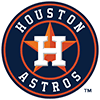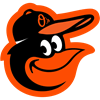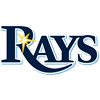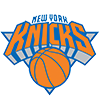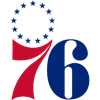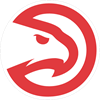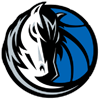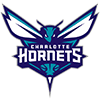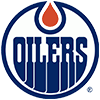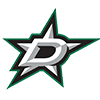After covering some general strategy, tournament stacks and the pitcher landscape in recent articles on Underdog best ball, it's time to utilize the fourth installment to survey the outfield position.
As a brief reminder, Underdog requires only three starting outfielders, the same as both pitcher and infield. Utility only options in traditional formats such as Nelson Cruz, J.D. Martinez and Franmil Reyes are classified as outfielders on Underdog, and will thus will appear in this article.
More specific thoughts will be revealed at the end of the article, though it's hard to rival the production at the stop of the outfield pool. The first round is littered with elite options. Thereafter, ADP appears to be largely inefficient, suggesting the optimal team build is drafting outfield early and then ignoring the position for several rounds while loading up on infielders and pitching. This will be a theme throughout the article, which will discuss some individual player analysis but focus primarily on optimal roster construction concepts.
Tier 1
| Player | Proj. Points | ADP |
|---|---|---|
| Juan Soto | 1,790 | 1.5 |
| Mike Trout | 1,750 | 2.7 |
| Ronald Acuna | 1,738 | 2.6 |
This tier is elite any across fantasy format or contest type and will give a relatively large advantage over other players at the position. It's hard to go wrong starting a draft with any player from this tier. However, roughly 75 percent of the drafters won't have access to this trio. That makes for fairly simple analysis of the initial grouping: if you luck into a top-3 pick, don't hesitate to draft Soto, Trout or Acuna.
Tier 2
| Player | Proj. Points | ADP |
|---|---|---|
| Mookie Betts | 1,680 | 5.4 |
| Christian Yelich | 1,648 | 8.6 |
| Bryce Harper | 1,592 | 10.2 |
Tier 2 is similar to Tier 1 in that there is little debate about the value each player provides and there's no obvious misalignment between ADP and projection. From a strategic and roster construction standpoint there's a projected edge to leaving the first round with one of the first six outfielders or one of the three ace starting pitchers.
There is a sharp decline in the outfield pool from here. While first-round picks should stand out among other options at the position, the fall-off is particularly stark in the outfield compared to the other positions. For example, no outfielder has a true second-round ADP and the gap between Harper and the top player in Tier 3 is 18 picks. Put another way, of the top nine projected point scorers, six are outfielders. From the 10th highest-projected player to 30th, only five outfielders appear. That leaves projected value available at both infield and starting pitcher to target in the second and potentially third rounds after grabbing a first-round outfielder.
Tier 3
| Player | Proj. Points | ADP |
|---|---|---|
| Marcell Ozuna | 1,477 | 28.7 |
| George Springer | 1,427 | 27.2 |
| Kyle Tucker | 1,422 | 37.0 |
| Austin Meadows | 1,401 | 71.9 |
For now, projections and ADP continue to align fairly well. Ozuna is bargain by projections, as he is projected to be the 13th-highest point scorer of the entire player pool. There's plenty of reasons to be intrigued by the rest of the tier, as Springer will bat atop arguably one of the most exciting lineups in the league, and Tucker appears set for a breakout campaign. However, Meadows stands out among the group due to his fifth- to sixth-round ADP. He's worth jumping considerably based on projections, so don't be afraid to stray from his ADP to roster him.
Tier 4
| Player | Proj. Points | ADP |
|---|---|---|
| Aaron Judge | 1,381 | 29.3 |
| Nick Castellanos | 1,369 | 49.5 |
| Michael Conforto | 1,359 | 49.5 |
| Starling Marte | 1,333 | 76.5 |
| Eloy Jimenez | 1,332 | 29.9 |
| Cody Bellinger | 1,329 | 12.8 |
| Nelson Cruz | 1,327 | 71.3 |
| Charlie Blackmon | 1,320 | 60.0 |
| Trent Grisham | 1,313 | 69.0 |
| Mike Yastrzemski | 1,312 | 95.1 |
| Luis Robert | 1,301 | 35.2 |
| J.D. Martinez | 1,295 | 41.4 |
This is first tier where things truly start to open and value appears. It's also an interesting group, as there are a number of decision points within the tier. First, is the discrepancy between projected total points versus per game production. For example, Bellinger is projected for only 140 games after undergoing offseason shoulder surgery. That lowers his overall points total for the season, yet his per game projection (9.49 points/game) places him at the top of Tier 3 with Ozuna. While still slightly out of line, Bellinger's 12.8 ADP is not nearly as egregious as it first appears based on the tiering system. Judge is in a similar situation. He actually out-projects Bellinger on a per-game basis with 9.93 points. The decision point with these two players comes down to risk tolerance based on injury history, and settling on a playing time projection for the duo that individual drafters feel comfortable with.
For drafters searching for next year's first rounders later in the draft, Tier 4 also has plenty of upside that isn't necessarily reflected in projections. White Sox teammates Luis Robert and Eloy Jimenez stand out in this regard, as both have a legitimate chance to be top-20 picks in 2022. Robert particularly requires that drafters be willing to pay for performance not yet seen, a large part of why projections suggest to stay away.
In terms of projection versus ADP, Marte and Yastrzemski are the most desirable options of Tier 4. Yastrzemski in particular appears to be a strong option due to his ability to get on base and hit for extra-bases (.372 career wOBA). The topic will be explored more later in the article, but Yastrzemski is one of the mid-round outfielders whose projection aligns them with ADP and thus makes them a player to target.
*Note: Bellinger appears on the RotoWire projections as an infielder, but is classified as an outfielder by Underdog.
Tier 5
| Player | Proj. Points | ADP |
|---|---|---|
| Dylan Carlson | 1,261 | 158.3 |
| Joey Gallo | 1,260 | 56.4 |
| Andrew McCutchen | 1,246 | 149.1 |
| Mark Canha | 1,241 | 164.9 |
| Lourdes Gurriel | 1,232 | 103.2 |
| Clint Frazier | 1,230 | 138.2 |
This tier begins to illustrate the potential for a stars and "scrubs" build in the outfield and continues through Tiers 6 and 7.
Looking to individual players, McCutchen and Canha are examples of the importance of volume in the format. Neither is projected to stand out on a per-game basis, but both are likely to bat at or near the top of their team's lineup throughout the season and compile their way to strong value.
That isn't to say there isn't any upside in the tier. Both Carlson and Frazier project to be locked into full-time at-bats for the first time in their career. In contrast to Canha and McCutchen, Carlson and Frazier are likely to see their ADP rise significantly heading into 2022.
Gallo is the wild card of the group. Heading into 2020, Gallo would have been a premiere option for the format, as his abysmal batting average and spiked strikeout rate wouldn't carry the same disastrous effect as in roto formats. From 2017-2019, Gallo posted a .363 wOBA across 1,406 plate appearances. The problem is there's no discount at his ADP. Even so, Gallo should be the best per-game producer in the tier.
Tier 6
| Player | Proj. Points | ADP |
|---|---|---|
| Brandon Nimmo | 1,208 | 170.9 |
| Leody Taveras | 1,207 | 211.5 |
| Kyle Schwarber | 1,207 | 124.2 |
| Alex Verdugo | 1,206 | 127.5 |
| Aaron Hicks | 1,194 | 136.7 |
| Michael Brantley | 1,191 | 128.5 |
| Kyle Lewis | 1,190 | 101.4 |
| Tommy Pham | 1,189 | 136.5 |
| Jesse Winker | 1,187 | 166.5 |
| Anthony Santander | 1,183 | 143.8 |
| Eddie Rosario | 1,180 | 114.6 |
| Randy Arozarena | 1,178 | 63.1 |
Tier 6 begins a much more progressive decline in points, making tiers more difficult to differentiate. Because of the number of players in the tier, there remain different targets for upside or stability. Verdugo and Nimmo both have skillsets tailored to the format, as neither is exceptionally impactful as a power or speed option. However, their ability to get on base and hit toward the top of strong projected lineups makes them targets for the format.
In contrast, there are a number of players who present significant challenges to team construction based on playing time concerns. Hicks has had at least one stint on the injured list in every season from 2013-2019, while Pham has had significant stints on the injured list in four of the last six seasons. The possibility of injury is present for any player, but taking elevated risks in a format with a short bench and no FAAB arguably presents unneeded downside in a roster build.
Arozarena sticks out in this tier, with the only ADP inside the top 100. He takes a relative hit as a Ray and is projected for only 142 games. However, with a projection of 8.29 points per game, he fits into this tier from a projected skill perspective as well. One of the polarizing players of the 2021 draft season, his projection highlights the risk of rostering him at ADP.
Finally, Taveras' stock is headed down. Projected to lead off for much of the spring in Texas, recent reports suggest that he has ceded that role. If he lives up to his .733 OPS projection, his playing time should be safe as the Rangers try to develop young players. However, it doesn't measure up to most of his peers in the tier, making him one of the riskier investments in the tier.
Tier 7
| Player | Proj. Points | ADP |
|---|---|---|
| Wil Myers | 1,161 | 123.4 |
| Ramon Laureano | 1,160 | 122.3 |
| Franmil Reyes | 1,160 | 82.4 |
| Jorge Soler | 1,157 | 83.5 |
| Max Kepler | 1,155 | 94.8 |
| Ian Happ | 1,154 | 107.9 |
| Andrew Benintendi | 1,154 | 159.2 |
| Kole Calhoun | 1,153 | 180.0 |
| Jackie Bradley | 1,145 | 214.2 |
This tier is largely one to avoid by the projections, as the group has almost a universally higher draft cost with worse point totals than those in Tier 6. However, there's a reasonable case to make Happ a target. The Cubs have already declared that he will lead off , and he has a .348 career WOBA, which translates well to the scoring system on Underdog.
On a per-game basis, Myers and Soler both become significantly more viable targets. As with Bellinger and Judge, individual drafters will need to gauge their belief in Myers and Soler's ability to remain on the field. Myers' projected points output is based on only 140 games and Soler's only 133 games.
Takeaways
This exercise exposes severe inefficiency when comparing ADP against projections and suggests that a stars-and-scrubs approach at the position is optimal. Grabbing one of the top six outfielders presents a large advantage over the field, which must be weighed against the possibility of one of the elite trio of starting pitchers.
However, after the first two tiers there's a fairly strong argument to until the middle rounds to jump back into the outfield player pool, beginning with Tier 5. A few exceptions such as Meadows and Yastrzemski stand out as strong individual players to target in the fifth- and seventh-round range. If employing a stars-and-scrubs build, it's advisable to largely roster players in more stable situations — based on both injury and playing time. It's also worth noting that in general this strategy misses out on upside and helium players and may be best employed in standalone leagues rather than GPP style contests.










